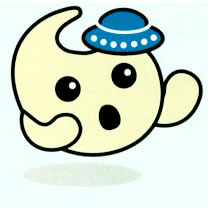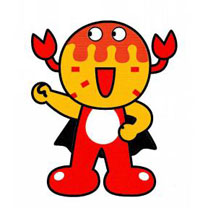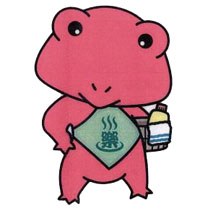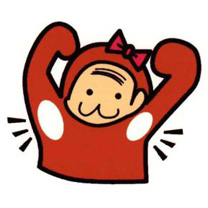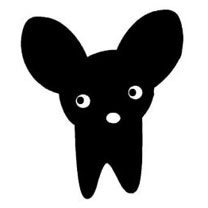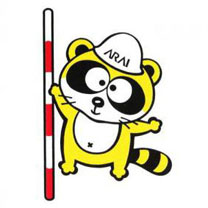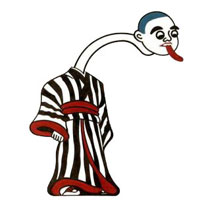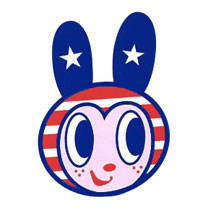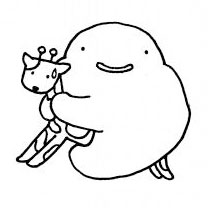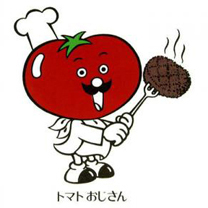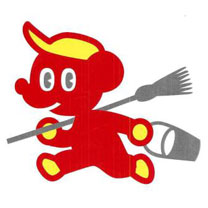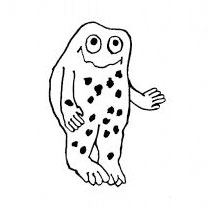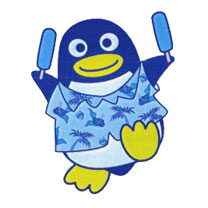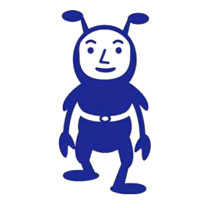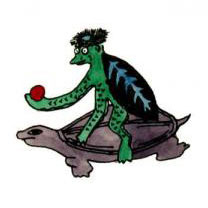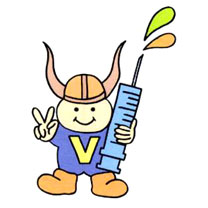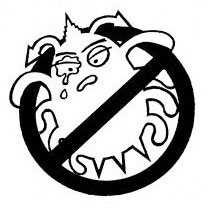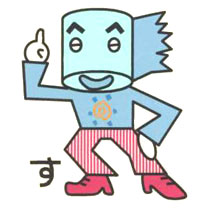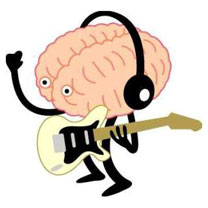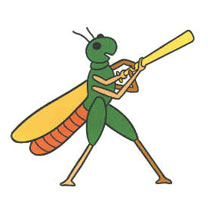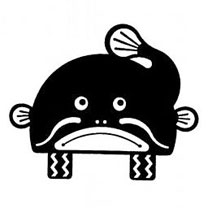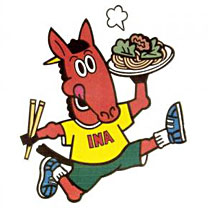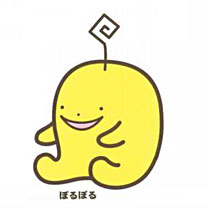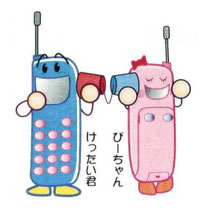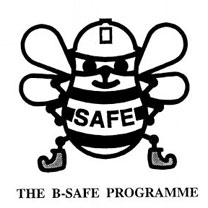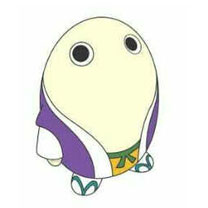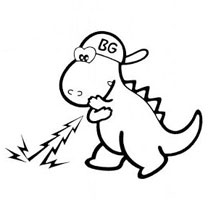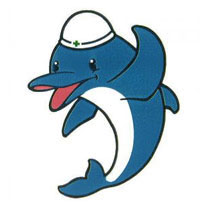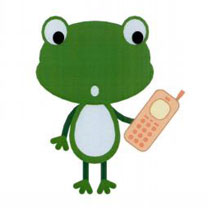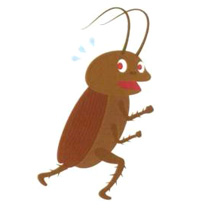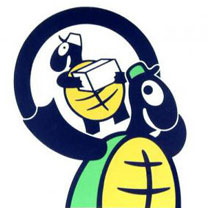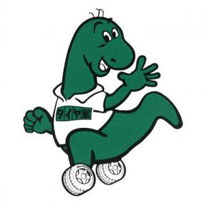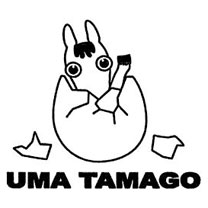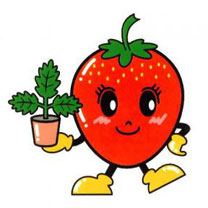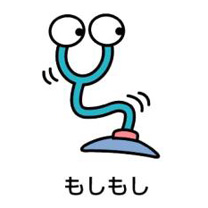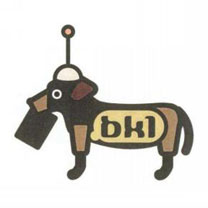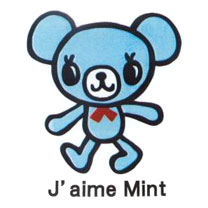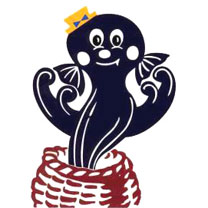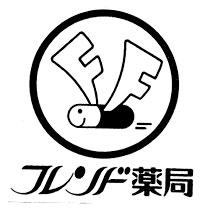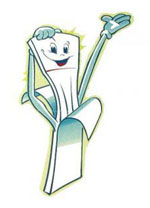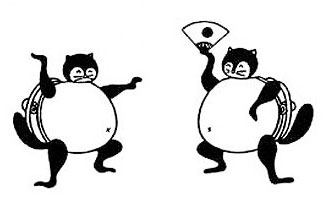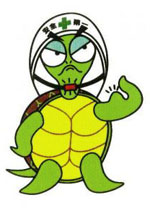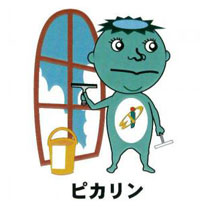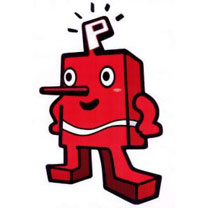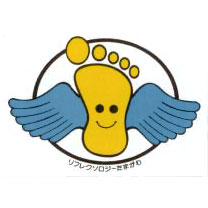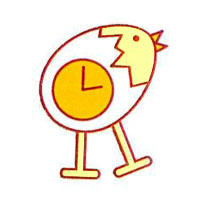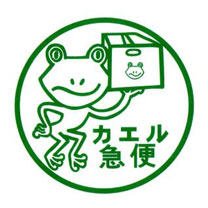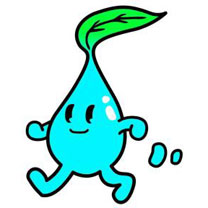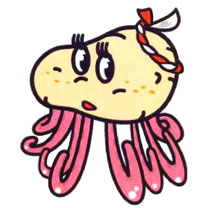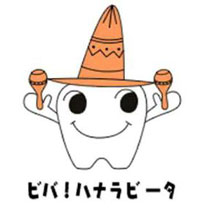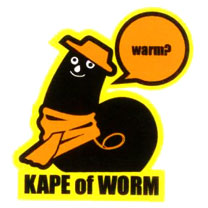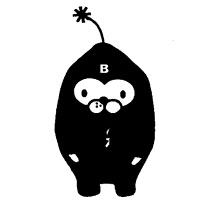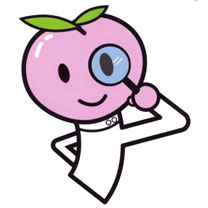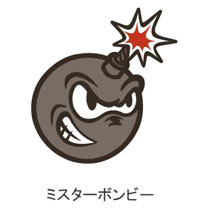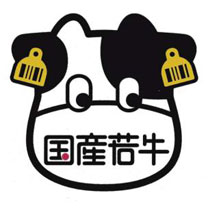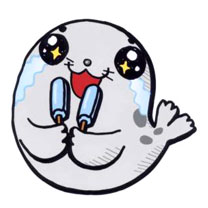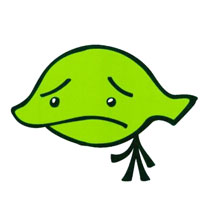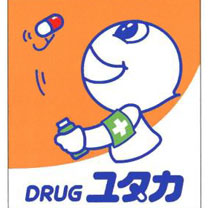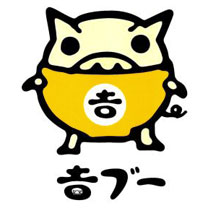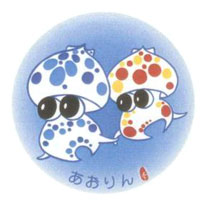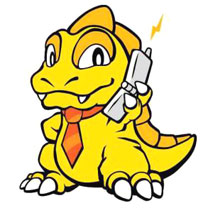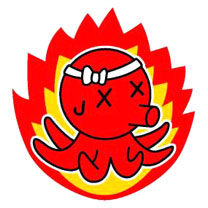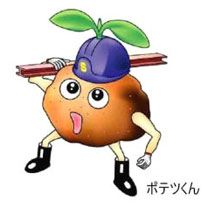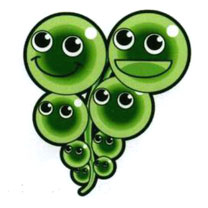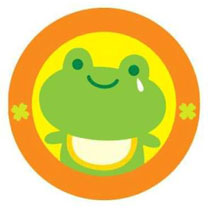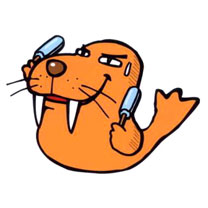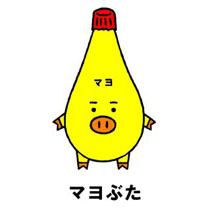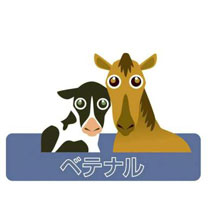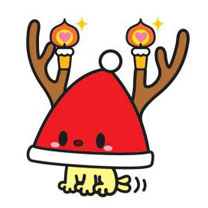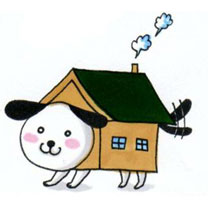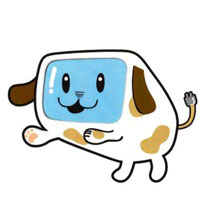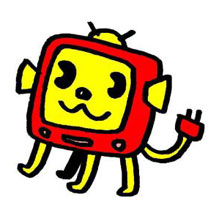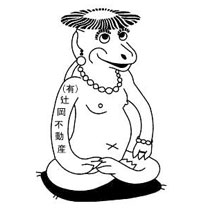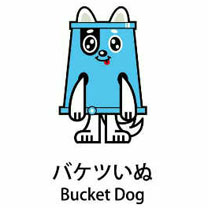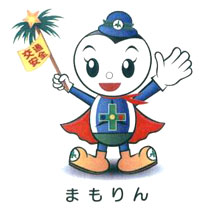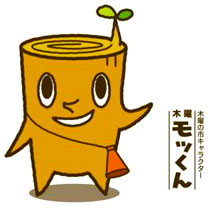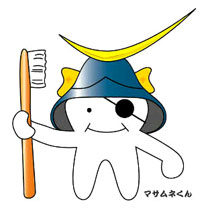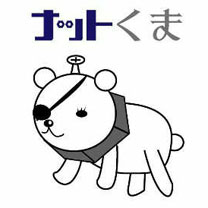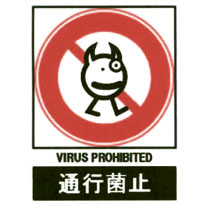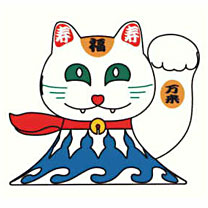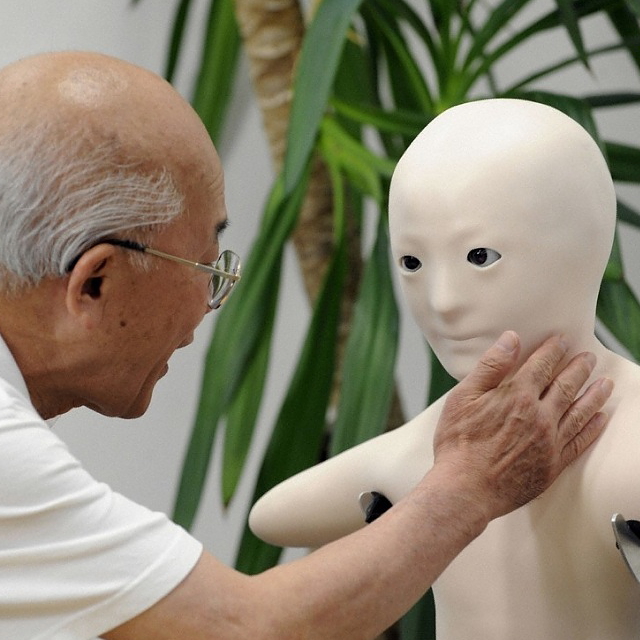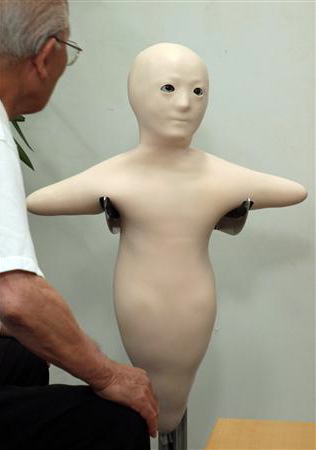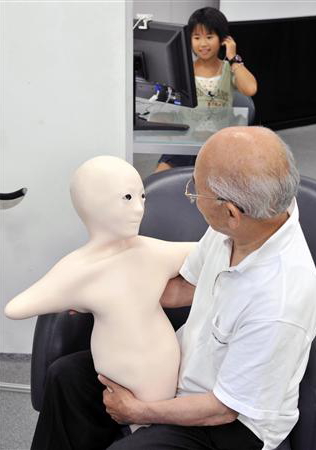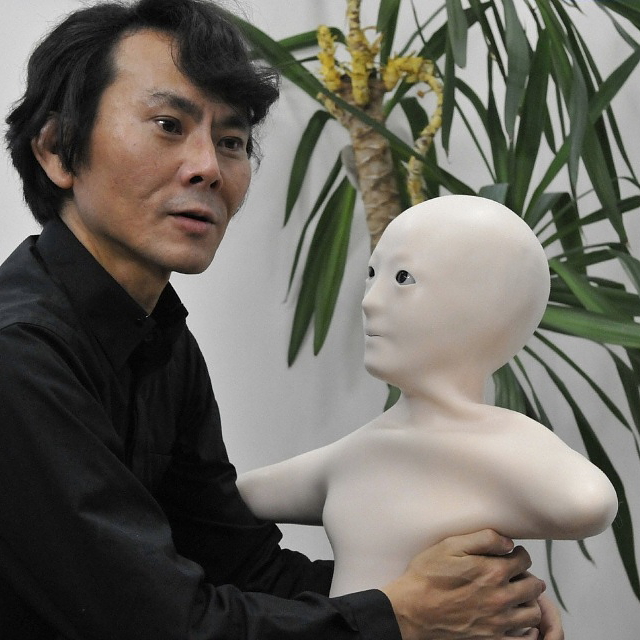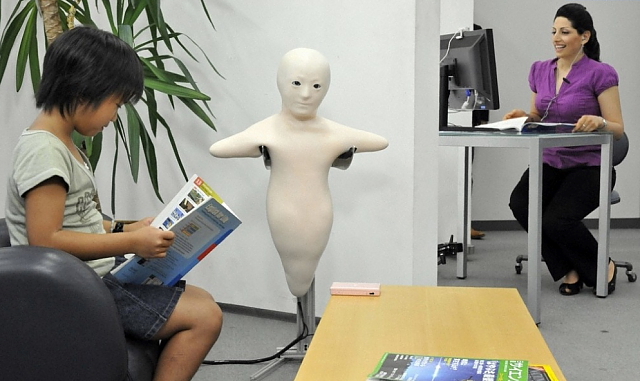Here are a few manner posters that appeared in the Tokyo subways between 1976 and 1982.
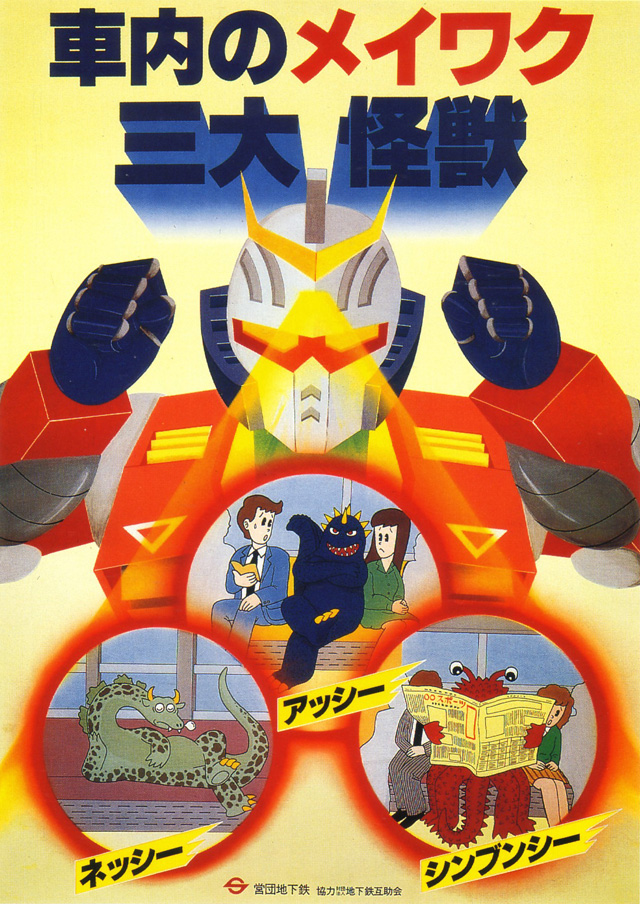
Three annoying train monsters (October 1982)
The three annoying train monsters shown in the poster are Nesshii (the sleeping monster), Asshii (the leg-crossing monster), and Shinbunshii (the newspaper-reading monster).
* * * * *
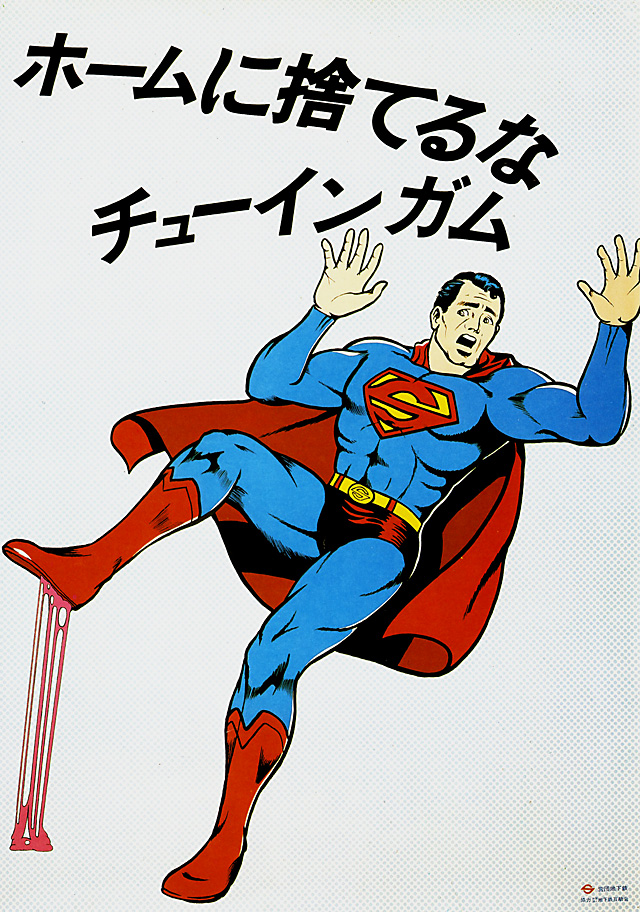
Don't throw chewing gum on the platform (September 1976)
Even Superman is no match for chewing gum discarded on the train platform.
* * * * *
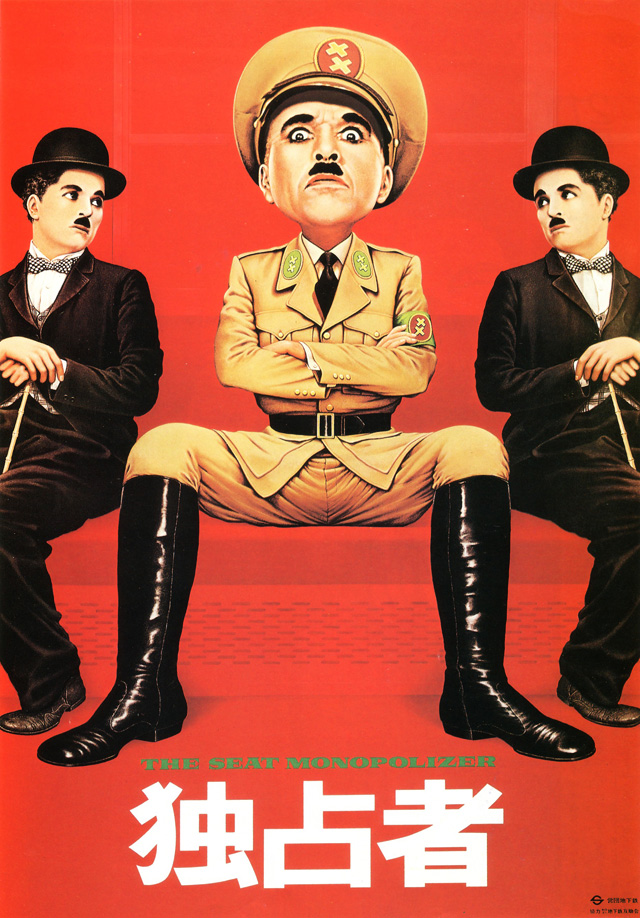
The Seat Monopolizer (July 1976)
Inspired by Charlie Chaplin's "The Great Dictator," this poster encourages passengers not to take up more seat space than necessary.
* * * * *
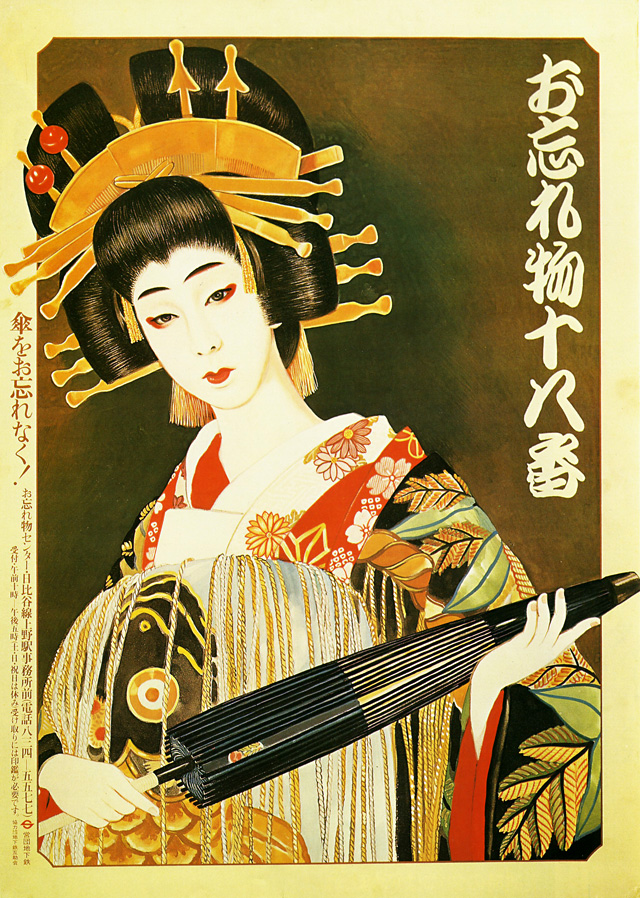
Don't forget your umbrella (June 1977)
This poster of the high-class courtesan Agemaki (from the kabuki play "Sukeroku"), whose captivating beauty was said to make men forgetful, is meant to remind passengers to take their umbrellas when they leave the train.
* * * * *
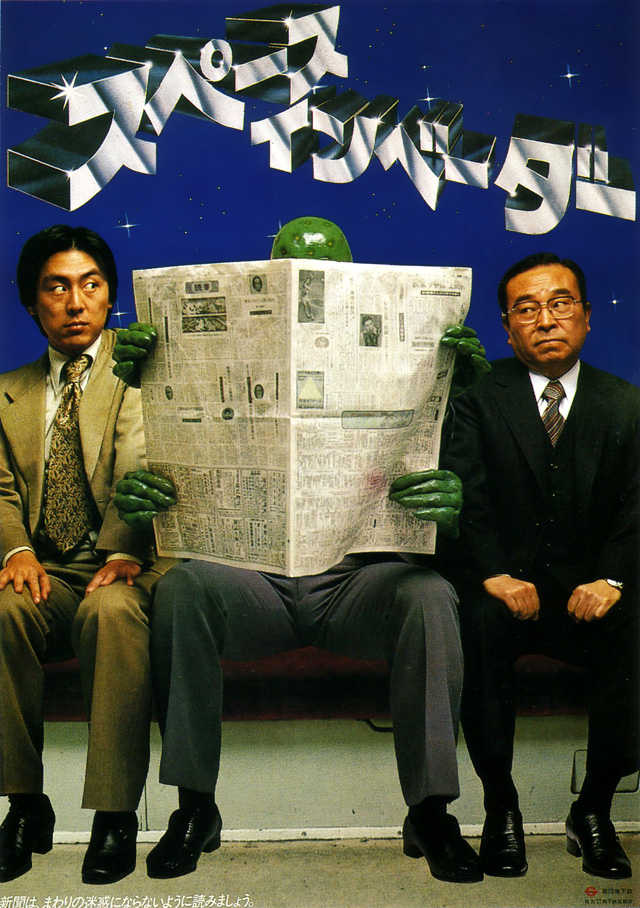
Space Invader (March 1979)
This 1979 poster pays tribute to the extremely popular Space Invaders video arcade game and encourages passengers to read their newspapers without invading the space of other passengers.
* * * * *
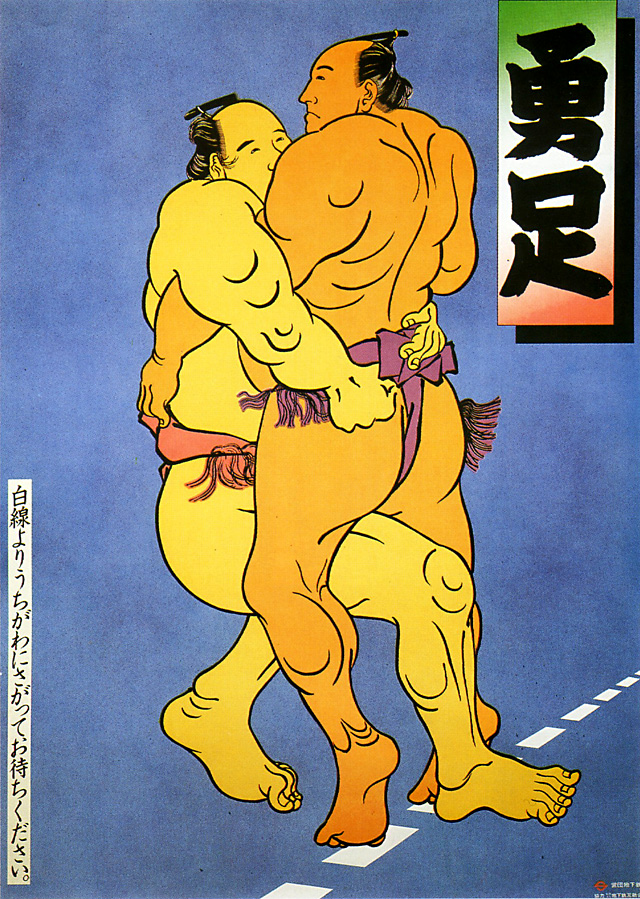
Isami-ashi: Wait behind the white line (May 1979)
The image of sumo wrestlers locked in combat serves as a reminder for passengers to stand safely behind the white line when waiting for the train.
* * * * *
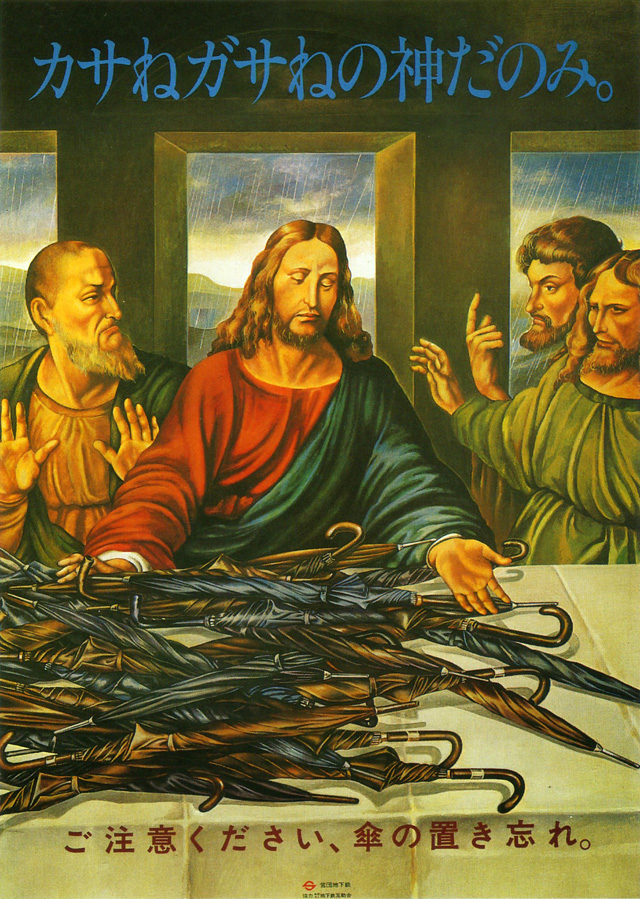
Don't forget your umbrella (October 1981)
The text at the top of this poster -- which shows Jesus overwhelmed with umbrellas at the Last Supper -- reads "Kasane-gasane no kami-danomi" (lit. "Wishing to God again and again"). The poster makes a play on the words "kasa" (umbrella) and "kasane-gasane" (again and again).
* * * * *
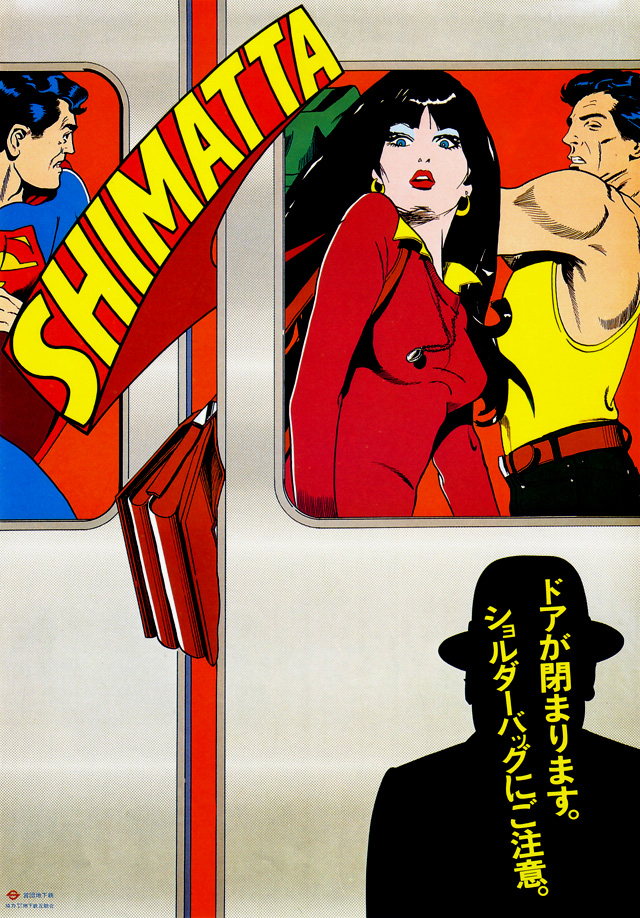
Shimatta (March 1977)
This poster warns passengers against getting their shoulder bags caught in the train doors.
* * * * *
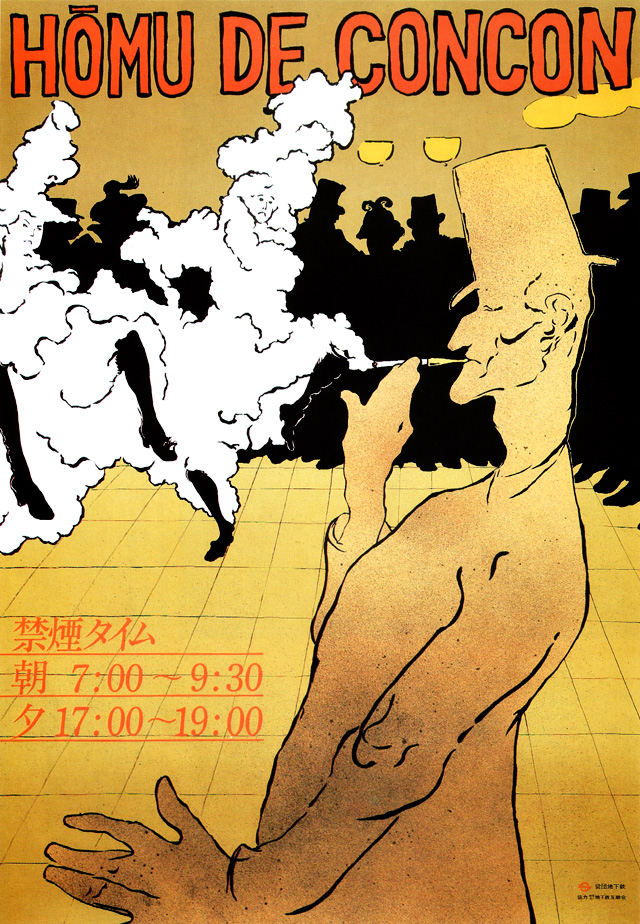
Coughing on the platform (January 1979)
Modeled after the paintings of Henri de Toulouse-Lautrec, this poster -- titled "Hōmu de Concon" (coughing on the platform) -- urges people not to smoke on the train platforms during the designated non-smoking hours (7:00-9:30 AM and 5:00-7:00 PM). The poster makes a play on the words "concon" (coughing sound) and "cancan" (French chorus line dance).
* * * * *
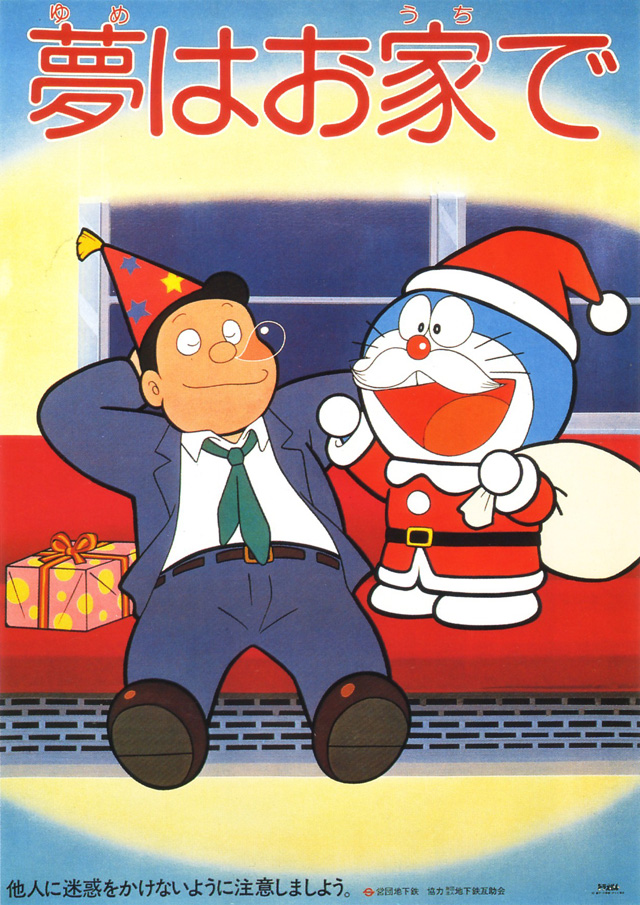
Dream at home (December 1981)
This poster, which features Doraemon dressed as Santa, encourages Christmas and end-of-year drunks not to pass out on the train.
* * * * *
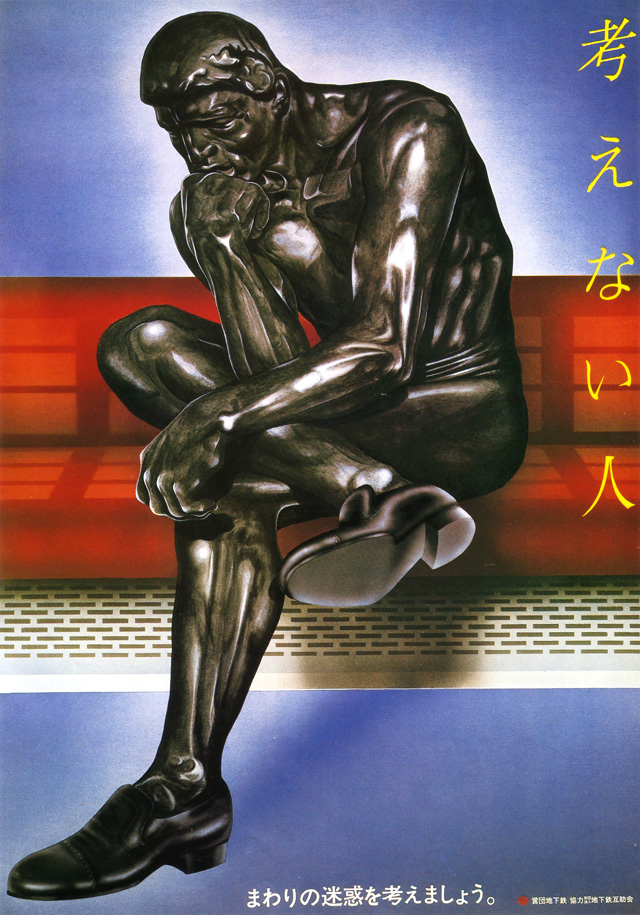
The Non-Thinker (May 1981)
The image of a cross-legged version of Auguste Rodin's "The Thinker" aims to encourage passengers to sit in a way that is considerate of other passengers.
* * * * *
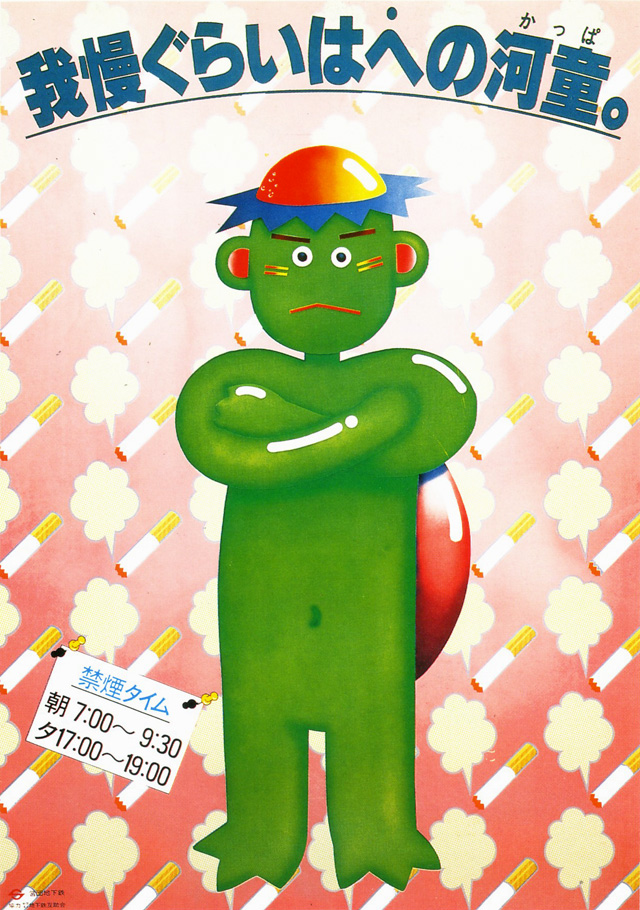
Kappa, (August 1979)
The image of a kappa (river imp) against a backdrop of lit cigarettes serves as a reminder not to smoke on the platform during the designated non-smoking hours (7:00-9:30 AM and 5:00-7:00 PM). The text at the top of the poster reads "Gaman gurai wa he no kappa," which translates loosely as "waiting is no big deal."
* * * * *
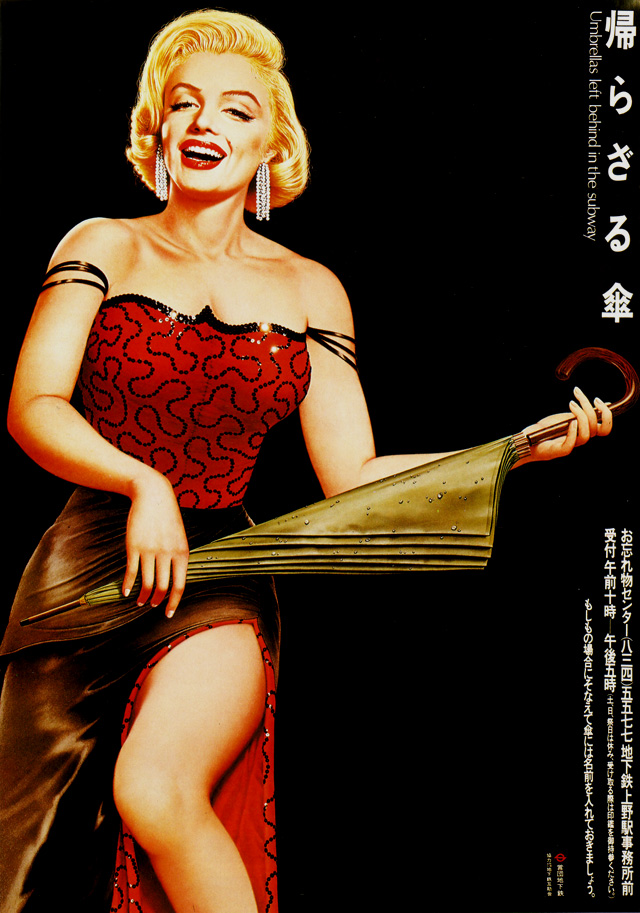
Umbrellas left behind in the subway (June 1976)
This Marilyn Monroe poster aims to remind passengers to take their umbrellas with them when they leave the train. The text in the top right corner -- "Kaerazaru kasa" (umbrella of no return) -- is a play on "Kaerazaru Kawa," the Japanese title for "River of No Return," the 1954 movie starring Monroe.
* * * * *
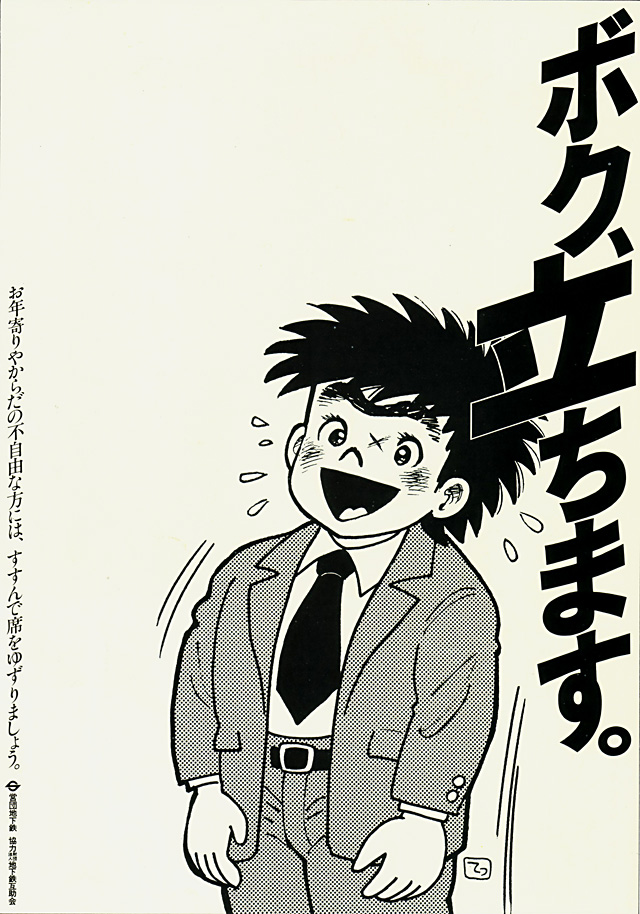
I'll stand up (July 1979)
Uesugi Teppei, a character from the popular manga "Ore wa Teppei," offers to give up his seat to the elderly and infirm.
* * * * *
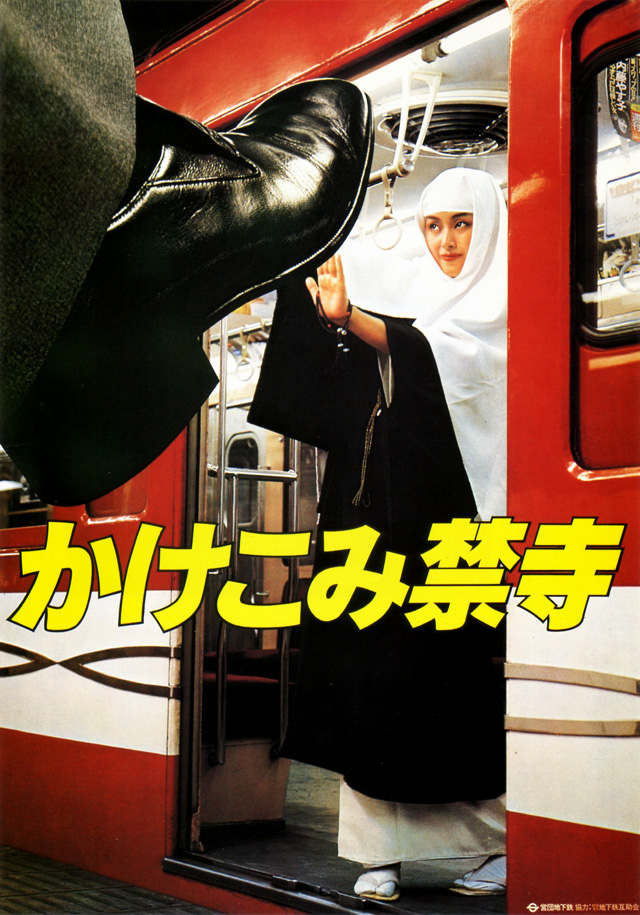
Do not rush onto the train (April 1979)
This poster advises passengers not to rush onto the train at the last moment. The text (かけこみ禁寺) is a play on the words かけこみ禁止 (kakekomi kinshi - "don't rush onto the train") and かけこみ寺 (Kakekomi-dera - Kakekomi temple), which has long been known as a sanctuary for married women fleeing their husbands.
* * * * *
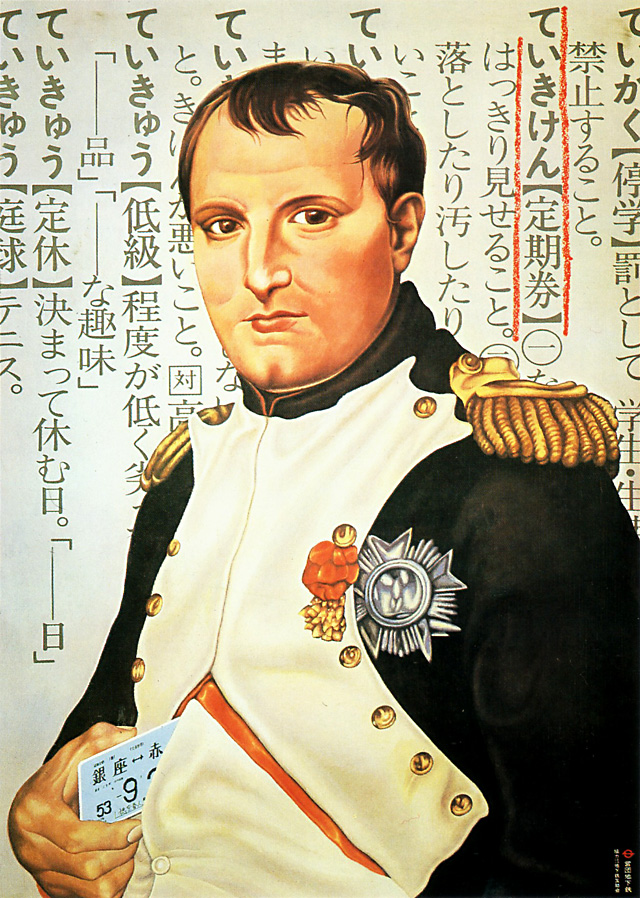
Clearly show your train pass (September 1978)
The image of Napoleon holding a partially concealed train pass is meant to remind passengers to clearly show their train passes to the station attendant when passing through the gates. The dictionary page in the background appears to be a reference to Napoleon's famous quote, "The word 'impossible' is not in my dictionary."
* * * * *
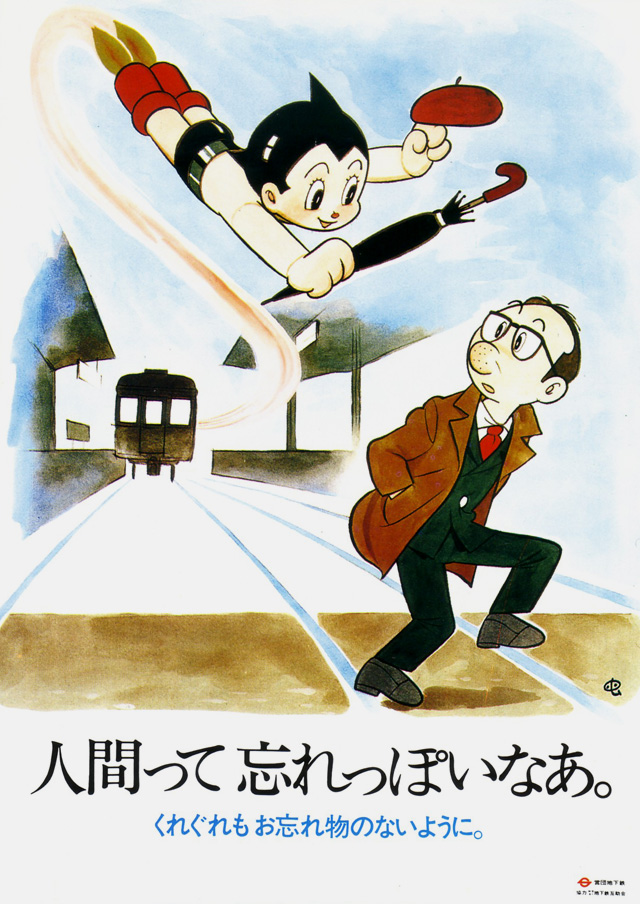
Humans are forgetful (February 1976)
This poster, which reminds passengers to take their belongings when they leave the train, shows Astro Boy returning a forgotten hat and umbrella to his creator, Osamu Tezuka.
* * * * *
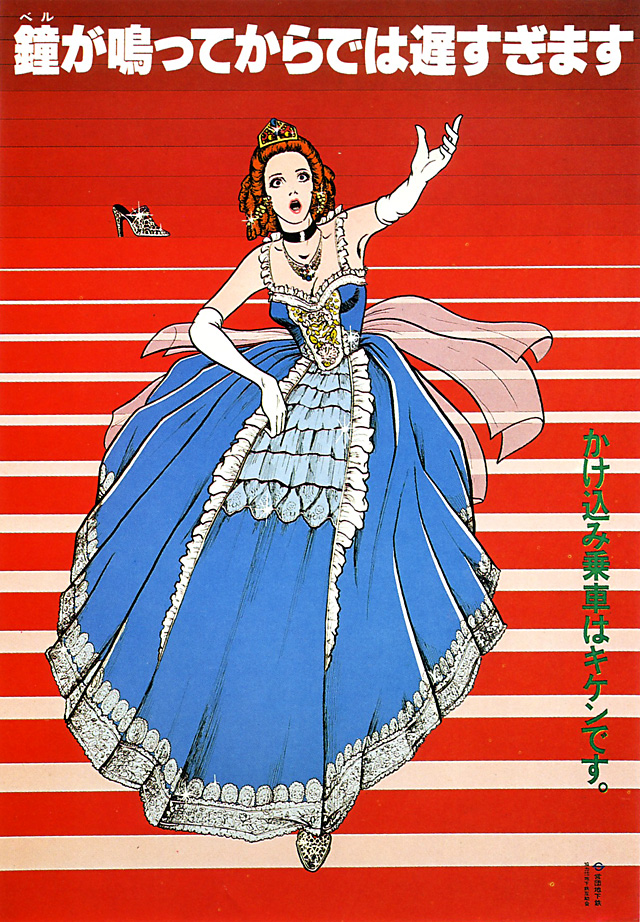
When the bell chimes, it's too late (April 1977)
This poster, which depicts Cinderella rushing from the ball at the stroke of midnight, is meant to warn passengers against the danger of trying to rush into the train after the departure chime sounds.
* * * * *
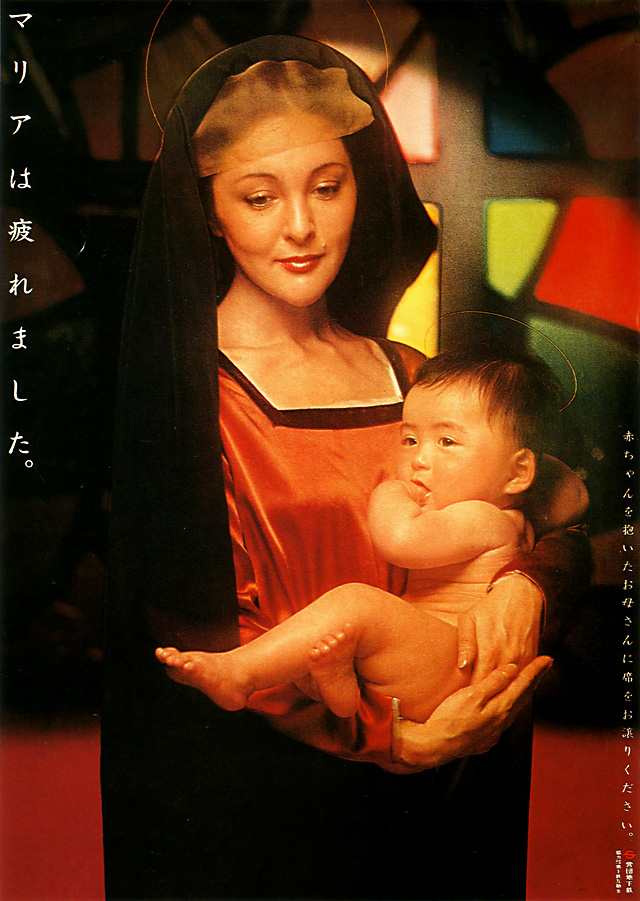
Mary is tired (December 1977)
The image of Mary carrying baby Jesus aims to encourage passengers to give up their seats to mothers with small children.
* * * * *
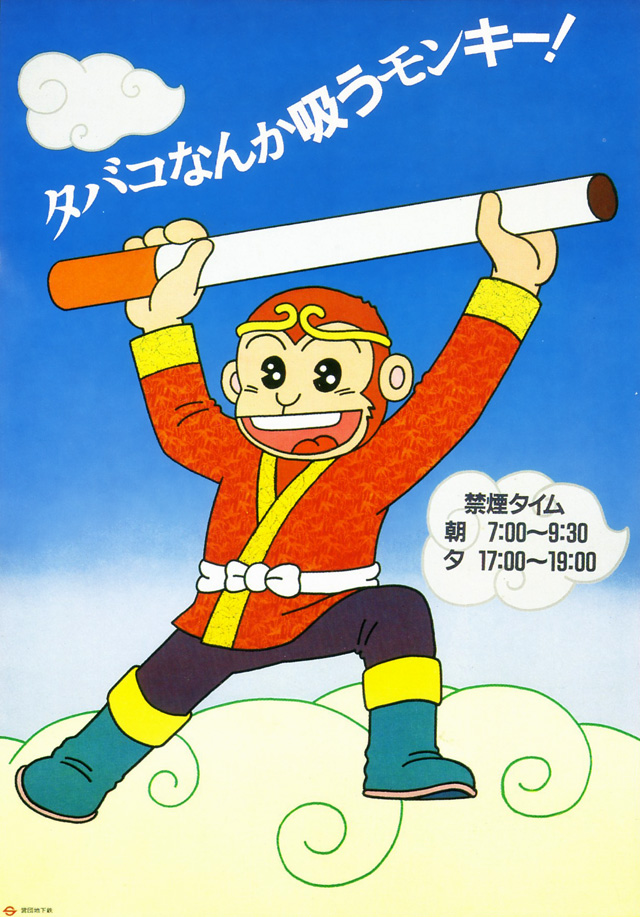
No smoking during non-smoking hours (October 1980)
The "Journey to the West" monkey urges passengers not to smoke on the platform during the designated non-smoking hours (7:00-9:30 AM and 5:00-7:00 PM).
* * * * *
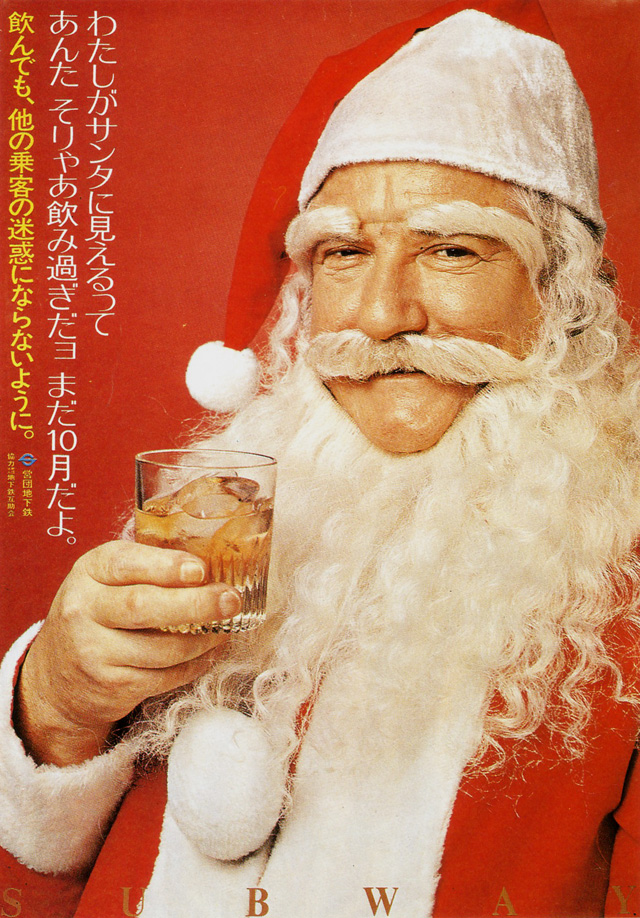
You've had too much to drink (October 1976)
This October 1976 poster of a drinking Santa is addressed to the drunks on the train. The text, loosely translated, reads: "I look like Santa because you've had too much to drink. It's only October. If you drink, be considerate of the other passengers."
* * * * *
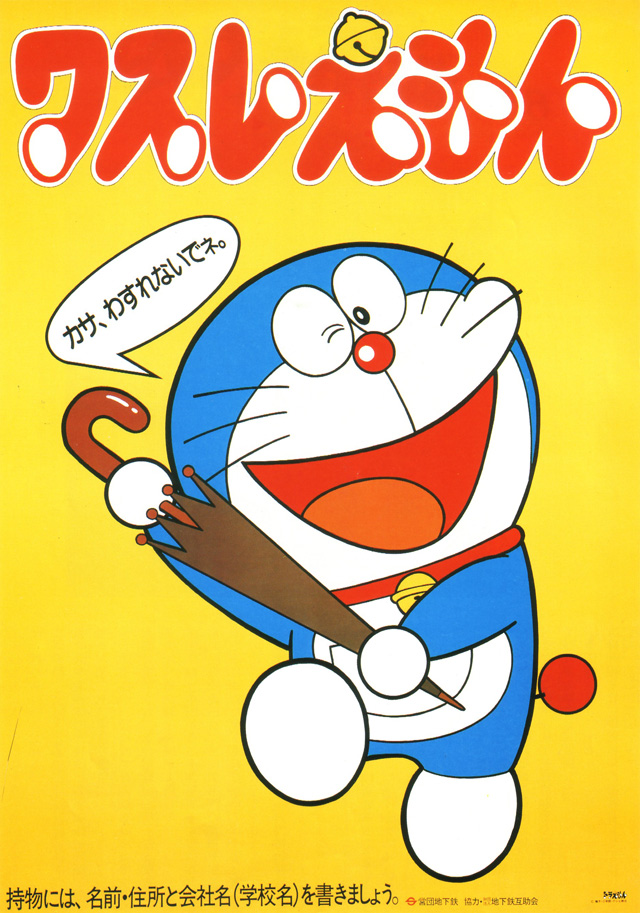
Wasureemon (June 1980)
Doraemon offers a friendly reminder not to forget your umbrella. The text at the bottom is a suggestion to write your name, address and company name (or school name) on your possessions.
* * * * *
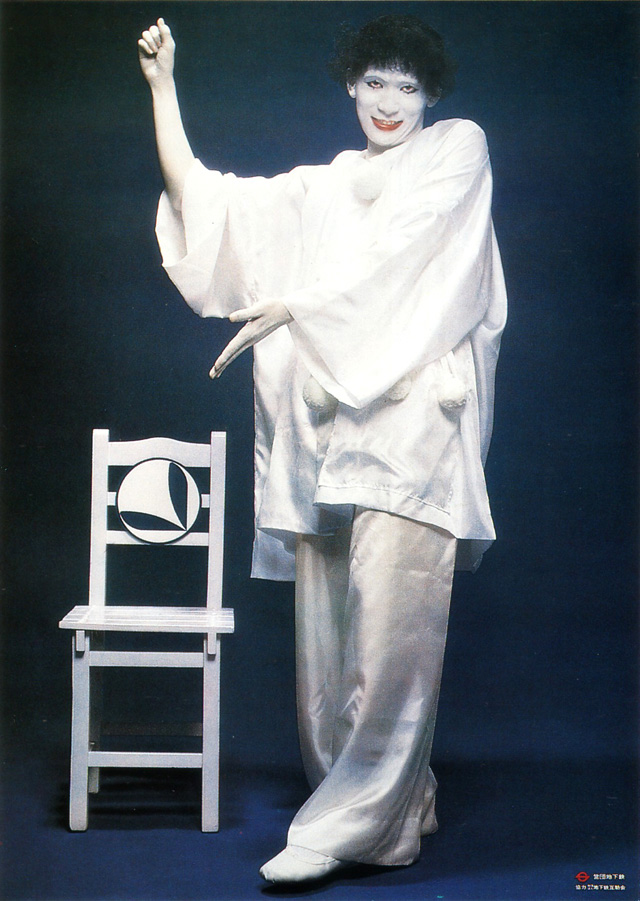
Marcel Marceau (October 1978)
Marcel Marceau gestures toward a priority seat reserved for elderly and handicapped passengers, expecting mothers, and passengers accompanying small children.
* * * * *
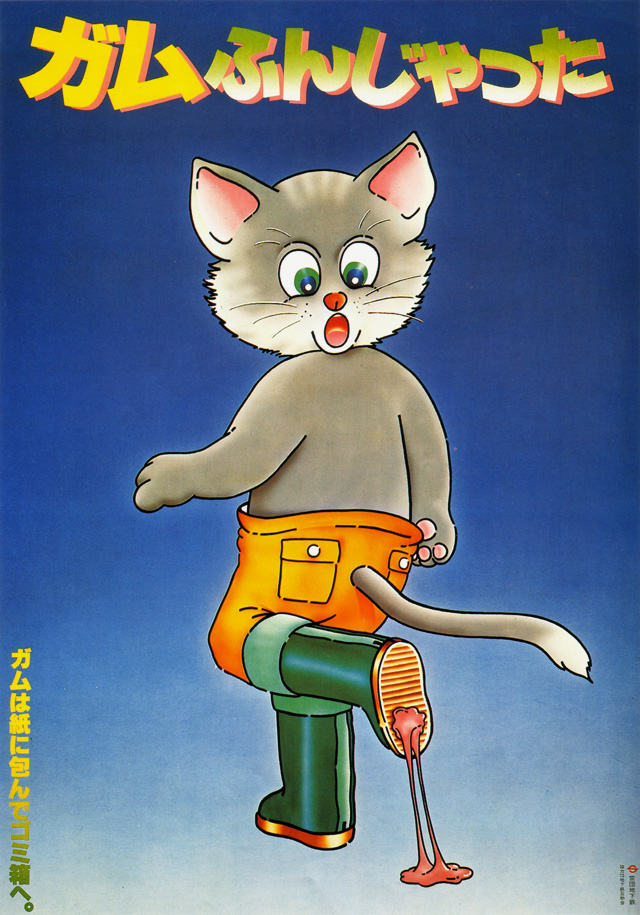
I stepped in gum (March 1980)
The image of a cat stepping in gum is a playful twist on the popular children's song "Neko Funjatta" ("I Stepped on a Cat").
* * * * *
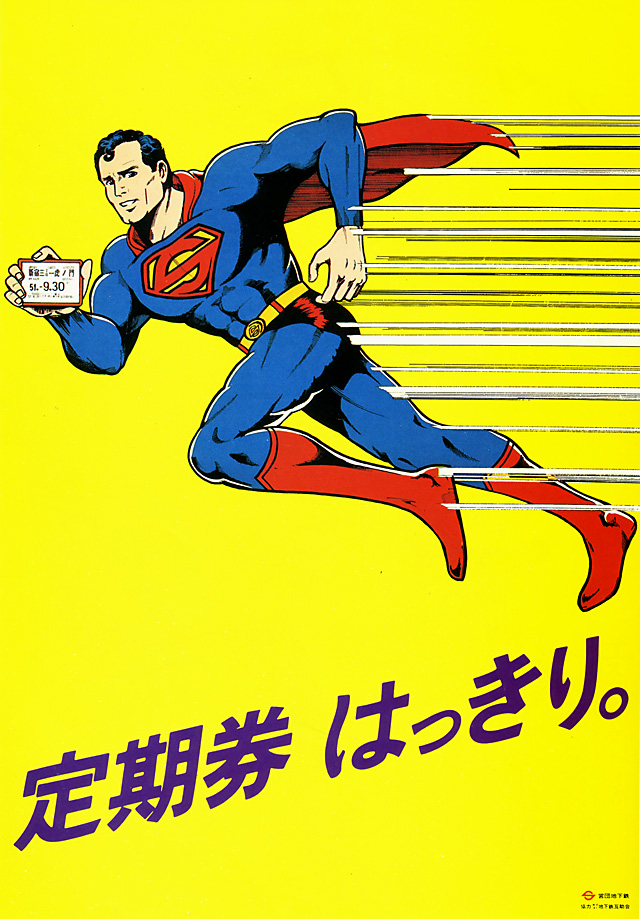
Clearly show your train pass (September 1976)
This poster is a reminder for passengers to clearly show their train passes to the station attendant, even when they fly like Superman through the ticket gates.
* * * * *
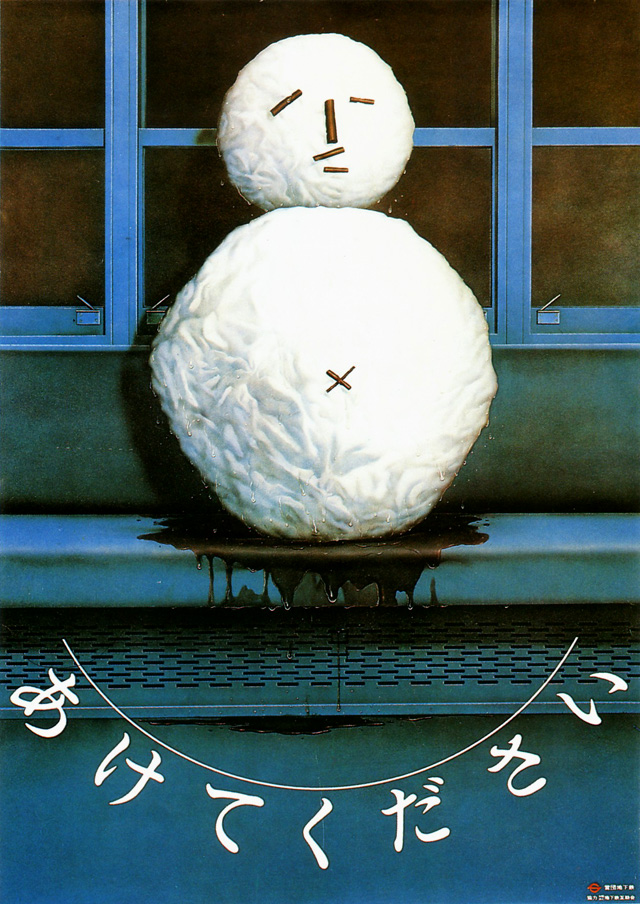
Please open it (July 1977)
This poster of a melting snowman aims to encourage passengers seated near a window to let cool air in when it is hot inside.
* * * * *
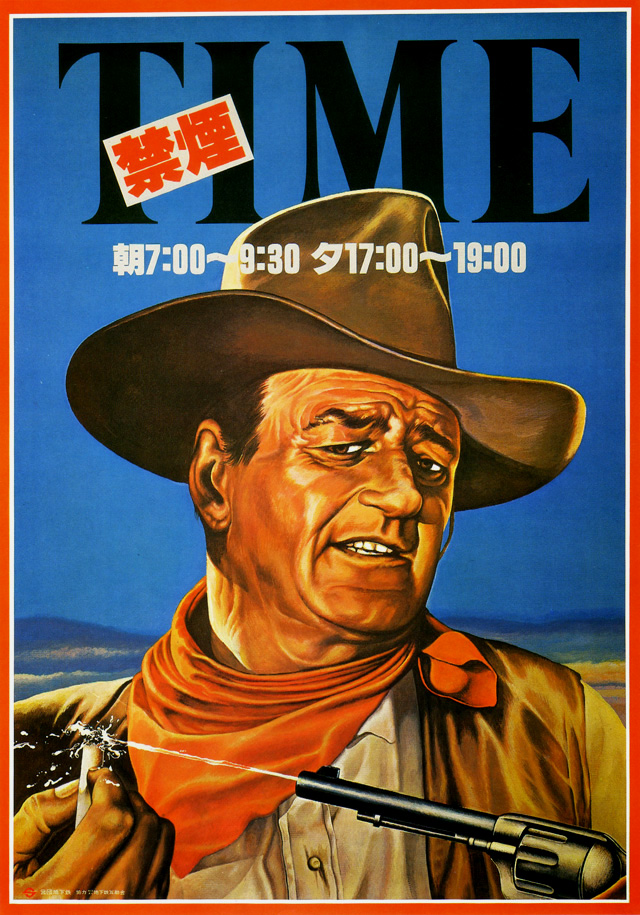
Non-smoking Time (November 1982)
The image of John Wayne on a mock cover of Time magazine serves as a reminder not to smoke on the platform during non-smoking hours (7:00-9:30 AM and 5:00-7:00 PM).
* * * * *
[Source: Manner Poster 100, published by Teito Rapid Transit Authority, 1983]

